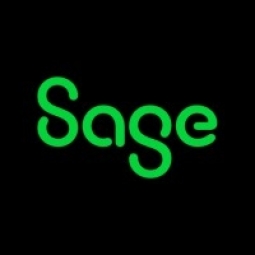公司规模
Mid-size Company
地区
- America
国家
- United States
产品
- Sage ERP X3
技术栈
- Visual Basic
实施规模
- Enterprise-wide Deployment
影响指标
- Productivity Improvements
- Customer Satisfaction
技术
- 功能应用 - 企业资源规划系统 (ERP)
适用行业
- 零售
适用功能
- 销售与市场营销
- 仓库和库存管理
用例
- 供应链可见性(SCV)
- 库存管理
服务
- 系统集成
关于客户
AM Leonard 是一家为园艺行业专业人士和家庭园艺爱好者提供工具和用品的公司,已有 130 多年的历史。该公司通过销售优质产品并提供尽可能最好的客户服务来脱颖而出。AM Leonard 拥有多元化的销售渠道,包括一个处理电话和邮件订单的繁忙呼叫中心、两个网站以及通过 Amazon.com、Search.com 和 Newegg.com 的渠道销售。该公司位于俄亥俄州皮奎,在一个地点运营。
挑战
AM Leonard 是一家拥有多方面销售渠道的公司,其中包括一个处理电话和邮件订单的繁忙呼叫中心、两个网站以及通过 Amazon.com、Search.com 和 Newegg.com 的渠道销售,该公司正在寻求用可定制和可扩展的 ERP 解决方案取代其旧式、不灵活的应用程序。该公司需要一个可以处理其复杂定价结构、简化订单输入并改善库存处理的系统。该公司还希望增强其团队访问整个企业信息的能力,从而做出更好的决策。
解决方案
AM Leonard 选择 Sage ERP X3 是因为它能够根据独特的业务需求进行定制,具有强大的架构和强大的库存管理工具。Sage ERP X3 的实施仅用了四个月就迅速完成。Sage ERP X3 固有的灵活性为公司节省了时间和金钱,同时提供了更高水平的客户服务。该软件能够轻松适应 AM Leonard 的业务模式,同时简化了流程中的订单输入。该软件还改进了库存处理,将完成实物盘点的流程缩短了一半。
运营影响
数量效益

Case Study missing?
Start adding your own!
Register with your work email and create a new case study profile for your business.
相关案例.

Case Study
Improving Production Line Efficiency with Ethernet Micro RTU Controller
Moxa was asked to provide a connectivity solution for one of the world's leading cosmetics companies. This multinational corporation, with retail presence in 130 countries, 23 global braches, and over 66,000 employees, sought to improve the efficiency of their production process by migrating from manual monitoring to an automatic productivity monitoring system. The production line was being monitored by ABB Real-TPI, a factory information system that offers data collection and analysis to improve plant efficiency. Due to software limitations, the customer needed an OPC server and a corresponding I/O solution to collect data from additional sensor devices for the Real-TPI system. The goal is to enable the factory information system to more thoroughly collect data from every corner of the production line. This will improve its ability to measure Overall Equipment Effectiveness (OEE) and translate into increased production efficiencies. System Requirements • Instant status updates while still consuming minimal bandwidth to relieve strain on limited factory networks • Interoperable with ABB Real-TPI • Small form factor appropriate for deployment where space is scarce • Remote software management and configuration to simplify operations

Case Study
Digital Retail Security Solutions
Sennco wanted to help its retail customers increase sales and profits by developing an innovative alarm system as opposed to conventional connected alarms that are permanently tethered to display products. These traditional security systems were cumbersome and intrusive to the customer shopping experience. Additionally, they provided no useful data or analytics.

Case Study
How Sirqul’s IoT Platform is Crafting Carrefour’s New In-Store Experiences
Carrefour Taiwan’s goal is to be completely digital by end of 2018. Out-dated manual methods for analysis and assumptions limited Carrefour’s ability to change the customer experience and were void of real-time decision-making capabilities. Rather than relying solely on sales data, assumptions, and disparate systems, Carrefour Taiwan’s CEO led an initiative to find a connected IoT solution that could give the team the ability to make real-time changes and more informed decisions. Prior to implementing, Carrefour struggled to address their conversion rates and did not have the proper insights into the customer decision-making process nor how to make an immediate impact without losing customer confidence.

Case Study
Ensures Cold Milk in Your Supermarket
As of 2014, AK-Centralen has over 1,500 Danish supermarkets equipped, and utilizes 16 operators, and is open 24 hours a day, 365 days a year. AK-Centralen needed the ability to monitor the cooling alarms from around the country, 24 hours a day, 365 days a year. Each and every time the door to a milk cooler or a freezer does not close properly, an alarm goes off on a computer screen in a control building in southwestern Odense. This type of alarm will go off approximately 140,000 times per year, equating to roughly 400 alarms in a 24-hour period. Should an alarm go off, then there is only a limited amount of time to act before dairy products or frozen pizza must be disposed of, and this type of waste can quickly start to cost a supermarket a great deal of money.

Case Study
Supermarket Energy Savings
The client had previously deployed a one-meter-per-store monitoring program. Given the manner in which energy consumption changes with external temperature, hour of the day, day of week and month of year, a single meter solution lacked the ability to detect the difference between a true problem and a changing store environment. Most importantly, a single meter solution could never identify root cause of energy consumption changes. This approach never reduced the number of truck-rolls or man-hours required to find and resolve issues.








